A second ASTER B1 New Technology (B1NT) missile was successfully test-fired on 30 July at the DGA missile range in Biscarrosse, marking another step in the long-range qualification of the SAMP/T NG air defence system.
The launch took place in the presence of representatives from France, Italy and the United Kingdom, the three nations involved in the trilateral FSAF-PAAMS air defence programme coordinated through OCCAR.
The firing builds on a previous launch in October 2024 and confirms that the upgraded missile can now engage targets at significantly longer ranges, reportedly in the 150 kilometre class, and at higher altitudes. The B1NT variant introduces multiple enhancements aimed at intercepting more challenging aerial and missile threats, including those with greater manoeuvrability, reduced radar signatures or high approach speeds.
Officials described the trial as part of a broader effort to expand the operational capabilities of SAMP/T NG, the latest evolution of the Franco-Italian land-based air defence system currently in service. In addition to its long-range performance, the B1NT will offer improvements in interception against tactical ballistic missiles, low-flying or stealthy threats, and potentially even hypersonic projectiles.
The missile will eventually be delivered to the French Air and Space Force, the Italian Army and the Italian Air Force. It is also schedul ed for integration into naval platforms, including through the Horizon-class frigate mid-life upgrade.
The SAMP/T NG system is designed for mobile deployment. It includes a multifunction radar with a detection range exceeding 350 kilometres, an engagement module, and up to six launchers capable of firing eight missiles each.
The whole system is road-mobile and can be brought to operational readiness in under 30 minutes. Engagements can occur in 360 degrees, simultaneously targeting a range of airborne and missile threats.
The ASTER B1NT’s updated design features a Ka-band seeker, new guidance algorithms and advanced electronics, reportedly improving its hit-to-kill accuracy. Its design is based on the existing ASTER architecture used in both land and naval applications across Europe.
Eurosam, the Franco-Italian joint venture between MBDA and Thales, is the industrial lead on the programme and has been developing air defence systems for more than three decades. OCCAR remains responsible for managing the programme on behalf of the partner nations. The UK participates in the broader FSAF-PAAMS framework through its naval air defence capabilities.


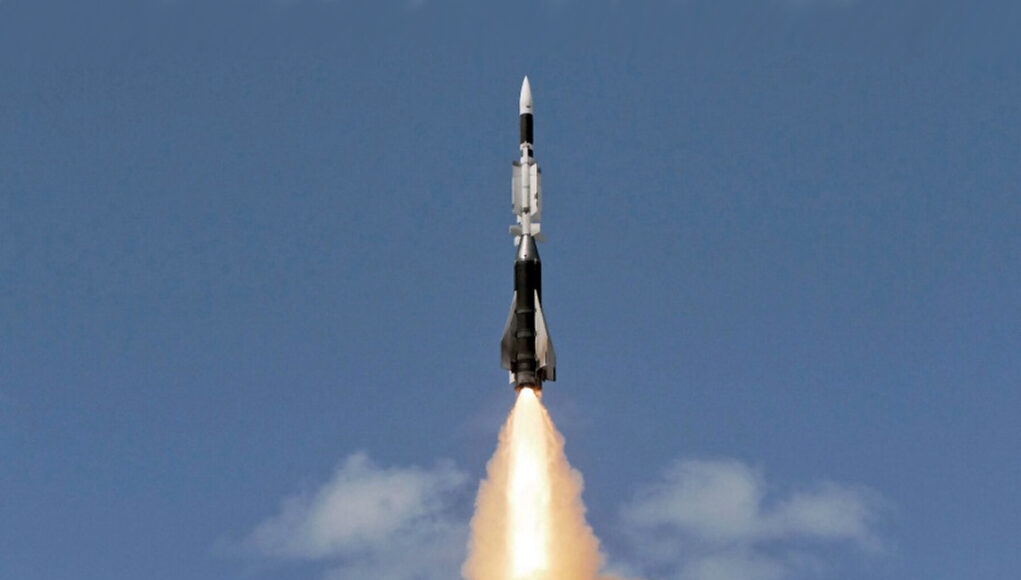

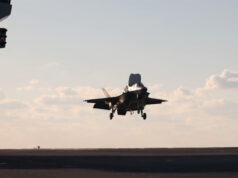
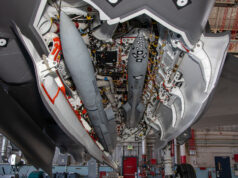

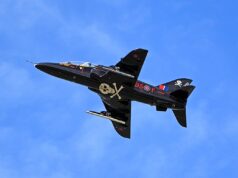


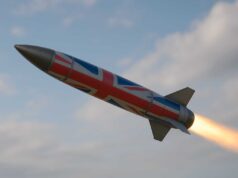



Hmmm…perhaps HMG’s position re potential acquisition can be anticipated: Funding is not currently available during the forecasted period, pending further analysis, legerdemain, review, testing, etc…🤔🙄😉
Funding is in place for phase 1 of the Sea Viper Evolution (SVE), which is where the RN’s current stock of Block 0 Aster are upgraded to Block 1. This includes a replacement non-sensitive munition warhead, a number of system board changes along with a missile software update. Which will allow it to better intercept ballistic threats. They will also from now on purchase only Block 1 Aster 30s. Alongside SVE Phase 1, a number of enhancements are being made to Sampson and S1850M along with the ship’s CMS. Again to further the anti-ballistic missile capabilities. The RN are evaluating the Aster Block 1NT as part of SVE phase 2. If funds are permitting, I suspect it will be a no brainer to get a few of these. As it further expands the T45’s ability to intercept higher ballistic threats. MBDA have now said the 1NT version can also engage hypersonic cruise missiles and hypersonic glide vehicles.
DaveyB,
Thanks for the update. NL had an article on topic (several?) years ago, haven’t managed to locate it. Wasn’t there an assertion that, at some point, missile body/dimensions would change,
either for 1NT or the proposed follow-on variant? Could Sylver VLS accommodate this? MK41 VLS? 🤔🤞
MBDA have confirmed that the Block 1NT retains the same dimensions as the previously s Block 1 and Block 0, so they should fit both the Sylver A50 and, if integrated, the Mk41.
This can also be seen in the images from the recent Block 1NT tests firings.
Hi mate, I’ve not heard anything on that front.
The Aster 30 is just under 5m long and was designed for launching from the Sylver A50, as used on the Horizon class and T45s. The Sylver A50 VLS is 5m long whilst the longer A70 is 7m long. When compared to the Mk41, the tactical length version is 6.8m long, whilst the strike length is 7.7m long. Both being longer than the Sylver equivalents.
The Aster 2nd stage “dart” dimensions is more in keeping with air launched BVRAAM. When seen in a VLS there is significant amount of volume not used. However, you could increase the diameter of the dart’s body. But you have to be careful not to upset the finesse ratio (length/diameter). If the body gets too fat, it generates significant drag.
However, if we look at the full fat strike length A70 or the longer Mk41. There’s at least an additional 2m to play with. To make life and development easier. The 1st stage booster would be quicker to develop. A 2m longer booster, equals more fuel, or more time accelerating to reach a higher terminal velocity. Aster 30 is publicly supposed to reach Mach 4.5. With 2m more fuel, acceleration time increases, so its terminal velocity will be closer to Mach 5 or faster.
To put this in perspective, Aster with this significantly bigger booster should be able to match range and altitude with the first version of SM6, ie around 200 miles and 100,000ft.
I’d say Aster with the bigger booster is an easy win. Though MBDA are developing the Aquila missile. Which will be a direct competitor to the latest version of SM6 and THAAD. Though it’s not due to be ready before the mid 2030’s.
DaveyB,
May well be Aquila that will presumably have an increased diameter; remember reading that it was not a near-term issue. 🤔
I think that the increased diameter missile was the ‘Block 2’, which was fundamentally a different missile I think. Based upon Davey’s descriptions below (always a good source of info!), I’d guess that Block 2 is now Aquila.
I’d agree with Davey that a longer booster for Aster 30 would be a helpful middle ground until Aquila is developed, but market will be the big problem; I don’t think there are many Sylver A70 VLS around (Horizons may have a few, with mostly A50s and T45 only has A50), and if they’d be the only users unless Aster gets integrated into Mk41, there won’t be a lot of takers for that. Unless they can get SAMP/T launchers that are the same 6.8 m length as Sylver A70 cannisters, it’d literally just be the Horizons that could make use of the larger booster- if I read Davey right below…
“BINT”
Hmmm.
It is odd that the UK went for the far shorter range option in CAMM instead of Aster for ground defence. Landceptor is a reasonable piece of kit but it’s limited range means it’s not much better than point defence.
We need both – a multi-layered approach to air and missile defence
We do but if only getting one then longer the better
We are not only getting one the other was never an option for GBAD. What is an option and possibly on the table is CAMM-MR and the already in progress acquisition of further CAMM fire units.
Current launchers are compatible with CAMM-ER, which is a bonus.
Not in this case. The SAMP/T would give next to nothing back to the British industrial complex. On the other hand, the CAMM, being a British-design, produced in the UK, is a much more valuable choice from an industrial perspective.
I personally would rather have the country protected than boost local industry. Missiles, guidance systems and radars require parts from all over the world and the idea that we are building sovereign manufacturing is just smoke and mirrors. But I accept it’s polictically better an option as the average voter doesn’t care about defending the country.
Unfortunately, the decision to only procure the Sky Sabre, rather than a longer-ranged system, was taken in an era when war on the European continent, and a credible aerial threat to the British Isles, were far-fetched ideas. For decision makers, the tangible effects of industrial investment outweighed the operational advantages of the Aster.
That said, there are plenty of ways in which the Sky Sabre is more capable than the SAMP/T. It has a much reduced minimum range, and is more suited to independent defence of the local area against cruise missiles than the SAMP/T, given that the latter lacks a short-range, rapid launch interceptor. It’s also cheaper, easier to handle and more mobile. There is a long-range capability for the Sky Sabre under development as well, known as the CAMM-MR and offering >100km range and >20km altitude, roughly equivalent to the Block 0 and Block 1 variants of the Aster-30.
Steve , I am the average voter and I care greatly about the defence of our country i wish our government would pull out there fingers roll up there Sleeves and really get a grip of our national defence. Especially missile defence, we lack a credible defence currently.
Absolutely. The Sky Sabre (CAMM) has no anti-ballistic missile capability. We really do need a credible multi-layered air and missile defence system
ASTER is vastly more expensive than CAMM.
Fair, which is depressing as air defence is so essential in the modern battlefield.
Instead we have ended up with a system entirely dependent on Isreal, which doesn’t seem ideal right now.
I was not aware of Israeli involvement in either CAMM or Aster?
I am very pro Israel but it dies highlight how insane Labours Jew hate really is.
@Chris It’s not CAMM or Aster per se. Sky Sabre’s command module is taken from Iron Dome. Originally built by mPrest I think, and delivered through Rafael.
@chris nothing to do with labour and anti Jew. Pretty much everyone from the UN down has heavily critisied Isreal for their complete lack of care for human life in their attempt to wipe out palastine. That includes Germany which is highly nervous about anything Jew related, and every other western nation other than the US. Their history in the region does not justify what they are currently doing
If any other nation was doing the same and the US would also be heavily critical of them. It’s important to look at the facts of what is going on and not let partizan views cloud judgement and in many cases racist views.
Sorry Steve but I think you are a racist loon.
The Israelis are fighting like saints compared to our efforts in WW2 and they are far more threatened than we ever were.
We deliberately killed 3.5m Germans,overwhelmingly women and children, in the air offensive and were right to do so. At the time we did this victory was already assured; We did it just to speed things up.
The Israelis are sending their best young people, the heros of the IDF, into danger to try to destroy Hamas. The civilian casualties are caused by Hamas hiding amongst the fascist scum who elected them to genocide Jews.
The Muslim world supports genociding Jews and the global south is dominated by gangster regimes with their hands out for bribe money. So Israel bad and Russia good.
Here in the west the left hate Jews because they do not fit their racist fantasy world view. The same one that created Multiculturism which is our real contemporary equivalent to National Socialism.
Good to know. Let’s see how many countries have agreed with my position, I don’t know almost all. Good good
Sorry can’t edit my comment, let’s just focus on defence and over.reliance on twmperential nations
At the user requirements stage (early 2000’s), the Army’s main threat was seen as aircraft/helicopters, cruise missiles and surveillance drones. So a fairly mobile system was needed to cover a battlegroup. Sky Sabre with the standard CAMM would provide a protective umbrella over a greater than 50km2 area. Which was the expected daily combat radius of a battle group.
Subsequently Italy wanted a surface to air weapon that could be land or sea launched, tightly packed, soft launched with an active seeker, but have more range than the standard CAMM to replace the legacy Aspide missile. This led to the development of the CAMM-ER. Additionally the NAREW contract with Poland was to look at bridging the gap between the standard CAMM and Patriot. Hence the development of the long range CAMM-MR.
However, since Sky Sabre was coming into service with the RA. The number of threats has increased to include theatre short range ballistic missiles and suicide/bomber drones, made particularly clear from the Ukrainian War. The RA have said that CAMM is a first step, and that CAMM-ER and/or the MR versions would also be incorporated to give wider coverage. For that to happen the Saab Giraffe will need replacing with something with a lot longer detection range, where the Saab Giraffe 4A has been mentioned. Don’t be surprised to see the number of threats that the CAMM family can intercept expand.
The issue is that even in the early 2000, rapier was out of date and the first gulf war had shown how essential wide area missile defence was. Ok the US system didn’t perform that well during it but it demonstrated a need and led to the systems that Ukraine so depends on. I still remember them needing many placements of rapier and other systems to defend London during the Olympics, that again should have been a wake up. We don’t have mass to surround cities with systems.
My guess is they were focused on Falklands and air portability and that drove decisions, but it ultimately ended up with a system that was too large like happened with the Ajax. Silly decision making at an early stage, not properly looking at if something is viable at concept stage.
Please bear in mind that Sky Sabre was purchased as a direct replacement for Rapier. So its threat envelope was an expansion of what Rapier could engage, ie ground attack aircraft, helicopters and surveillance UAVs.
The CAMM’s threat envelope incudes sea skimming missile along with high diving anti ship missiles.which dive on to the target from 60 degrees or more.
The Ukraine War and the Operations off Yemen, have shown that theatre ballistic missiles are much of a threat as cruise missiles. But also that anti-ship ballistic missiles are becoming a realistic threat. Which means that these types of threat will need a counter. CAMM has all the tools to do this
We watched but have no plans to attach, incorporate, or install in, on or anywhere near any piece of kit we currently own or intend to own on the foreseeable future. Amazing. What we watching for?
The Free Banquet and 5 star hotel is my guess 🤔👀😊
Lolo
This should be a no-brainer for the MoD. Without this variant, the Type 45 destroyers have no way of combating the medium-range ballistic missiles proliferating across the inventories of hostile states. The Block 1 might be fine for engagements in the Middle East, but to present a credible defence in the Pacific and arguably the North and Norwegian Seas, the medium-range anti-ballistic and terminal-phase counter-hypersonic capability of the Block 1NT is a necessity.
It would be good to expand the AAW/ABM capabilities beyond just the six T45s. Wouldn’t a few more enhanced AAW T31s help bolster coverage in around UK/Eurooe/North in the interim now to 5 years and free up the T45s? The T31 inbuild now could be added to and their CIP upgrades csn be upgraded!
As specced, the air defence profile of the T31 ships is already much more effective than their GP T23 predecessors. This is mostly due to the much improved radar, more advanced artillery suite and more adaptable planned VLS.
For a more effective ship in that role, a larger variant of the NS110 radar could be fitted. There are several of these already available, which offer detection ranges out to 400km. The CAMM-ER is an easy choice to improve the reach of the T31, as is the upcoming CAMM-MR.
There’s good reason to do this as well, as you suggest. Given that two of the currently planned five T31 frigates will be deployed abroad, leaving three near the UK, adding even two or three extra ships with the suggested radar improvement would make a significant difference.
I actually thought that all 5 T31s where to be forward based abroad which is why i’d add 3-4 more for more home waters. If it’s l as you say just 2, which is not much really, how can you have much of a presence with just 2? There are many variants of the A140 and even the MRP stretched variant looks very useful as does the Polish class. Could be quite ideal as coastal-regional frigates with a bit of AAW, ASW and ASuW abilities, decent hangar and not cost the earth and given a stronger radar. I was wondering why if the rule of three was important why there hasn’t been a 9th T26 ordered?
This would be useful but the NT is supposed to be able to deal with 1500km range ballistic missiles.
It would be useful for the RN and to a degree the army on expeditionary deployments but for UK defence, launches from Kaliningrad would be in that range but anything launched from mainland Russia or the the middle east is going to require a far more capable missile. The Aster B2 BMD is said to be planned to deal with 3000km range missiles.
The UK would need a range of interceptors.
For cruise missiles ,sky sabre looks good, the missiles are relatively cheap.
Coat is going to be a big factor, SM3 block 2 are quoted as $25b a go
The US fired 150 THAAD recently to protect Israel.
Something cheaper will be needed.
The Aster-30 Block 2 isn’t really a thing, at least not anymore. It was first floated as an idea by MBDA for the French and Italian governments to complement the Block 1, but was never pursued further than the concept phase and was not funded. The Block 1NT was then developed as a more attainable and conservative upgrade programme. The Block 2 hasn’t been mentioned by MBDA, the French government or the Italian government for more than half a decade at this point. It’s effectively dead, having been replaced by the Block 1NT, and by the upcoming Aquila.
I agree that on its own, the Block 1NT is insufficient for full spectrum protection. That will likely only be achieved on the Type 83 destroyer, either through the SM-3 or the Aquila.
As to a cheap, anti-ballistic interceptor, there’s currently little available beyond the PAC-3CRI. That said, the CAMM-MR could be useful in that arena.
My understanding the CAMM-MR will be too slow to act as anti-ballistic missile interceptor, even the much larger ~ $4 million PAC-3 MSE range is only ~ 25 km against SRBMs, whereas in contrast its max range may be 160 km against a sub-sonic aircraft. June 23rd at the Quatar US airbase US Army and Quatar batteries fired 30 Patriots defending it against 14 Iranian ballistic missiles, one made through and hit the airbase.
Also reports recently that the two batteries of THAAD based in Israel fired as many as 150, cost ~$15 million each, defending against the Iranian attack along with SM-3s from two USN Burkes in the Med and Israeli Arrow 2 & 3 missiles with an ~ 10% failure rate to intercept with hits on Israeli populated areas, as Israel is a very small country which in theory easier to defend, so its concerning and very expensive to defend against ballistic missiles, US spending very big money on new radars for Patriot and THAAD plus the new IBCS C&C system.
In relation to BMD, the speed of the interceptor is of variable importance depending of the situation. When deployed in the point defence role – for example, in defence of the CSG, ship self-defence or close escort of merchant vessels, where the threat is closing directly with the launcher, speed is much less of an issue as the interceptor doesn’t need to lead the threat to perform a successful intercept. Earlier models of the SM-6 had a maximum speed of Mach 3.5, a number not unlikely for the CAMM-MR given the Mach 3 and > Mach 3 performance of the CAMM and CAMM-ER.
Against crossing threats, in situations such as wide area defence and defence of land targets, speed is far more important, as the interceptor has to make up ground against the threat to get ahead of it to make the intercept. That’s where the CAMM-MR as currently expected would likely struggle.
In regards to cost, BMD will always be a losing sum for the defending party. Systems such as the CAMM-MR, that allow you to save more expensive interceptors for more capable threats, alleviate the issues somewhat. Of course, the most economical solution is to ensure that defensive operations are complemented by counter-force and preventative actions.
Poland are initially building a three tier air defence system for its forces. Where the Grom MANPAD is used for VSHORAD mounted on 4x4s. The middle tier is based on CAMM and is part of the NAREW program. Which has also called for a missile to fill the gap between the standard CAMM and Patriot (Patriot comes under the Wisla program). This led to the development of the 100km+ range CAMM-MR.
By all accounts the larger CAMM-MR is still a unitary missile (one part) and uses a dual pulse rocket engine instead of the single pulse that the current CAMM uses. This will not only give it a longer range, but should also increase is average speed either side of its terminal speed. Although it is fatter than a standard CAMM the longer length should rebalance the finesse ratio, help to reduce its drag. I’d say the speed will be either the same as CAMM or more likely slightly faster, due to the greater volume of fuel along with the two pulse motor, thereby giving it more acceleration time.
It remains to be seen if CAMM and its variants has an anti-ballistic missile capability. In essence it should, as the active radar seeker has very good fidelity. Plus for a ballistic target heading directly towards the launch platform. The merging of the two objects at a combined speed of greater than Mach 7 should impart significant energy. In the tests that I know of, CAMM has a greater than 90% collision rate when intercepting targets. Admittedly these were for targets travelling Mach 2.5 or slower. Pretty certain MBDA are working on this.
A dual-pulse RM is particularly useful in preserving a high P(K) at extended range or altitude, and is already in use on the CAMM-ER, so that’s pretty much a given. Another point in favour of the CAMM-MR having a BMD capability in that similar missiles, such as the IRIS-T SLM, already have a BMD capability as confirmed by Diehl, despite being a much smaller missile.
Do you have sources on the collision rate for the CAMM during testing?
25 km isn’t PAC-3 MSE’s range; it’s the keep out altitude.
A ballistic missile that dispenses submunitions above this altitude will not be killed.
The MBDA Aquila program is the direct replacement for the Aster 30 Block 2. This was kicked off officially in 2023 and is looking at an endo-atmospheric (within the atmosphere) interceptor. MBDA’s plan is to have it fielded by 2030. To put Aquila in to context, it will be a European equivalent to the SM6 and THAAD. At this stage, I have not heard of a European Exoatmospheric interceptor to rival SM3. But as Germany has just purchased Arrow-3, their participation and funding is probably off the table now.
Surely the SAMP/T NG is something we should be procuring, or will CAMM-MR be able to incercept ballistic missiles?
We just don’t know enough to make a concrete appraisal of the anti-ballistic capability of the upcoming CAMM-MR, but some guesses can be made. The only performance requirements currently known are that the missile be capable of horizontal ranges in excess of 100km, and of reaching altitudes greater than 20km. That puts the CAMM-MR roughly equal in altitude and with 84% of the range of the Aster-30 Block 0. In the ballistic missile defence game, altitude, rather than range, is key. Take the PAC-3MSE, with its mediocre range but impressive >30km altitude, or the THAAD, which despite having a range barely larger than that of the Aster-30, has a much greater altitude. Given that Block 0 Asters have intercepted ballistic missiles in the Red Sea, I expect that the CAMM-MR should be able to tackle those less threatening ballistics when it enters service.
That said, the CAMM-MR will not be able to tackle the longer-range, more sophisticated ballistic and hypersonic missiles that the Block 1NT will able to. Therefore, for an improved capability, both would ideally be procured. It’s my expectation that this will be the mixture employed on the upcoming Type 83 destroyers.
A lot will depend if the ballistic threat is passing you or coming for you. If it’s passing, then you want your interceptor to be able to reach an interception point ahead of the threats path. This is where the likes of Aster 30 Block 0 struggles, as it can’t make the altitude to intercept medium range ballistic missiles, that could be travelling at or above 100,000ft. Where both SM6 and THAAD can achieve. The Block 1NT version of Aster 30, will still be lagging behind SM6 and THAAD in this regard.
However, if the ballistic threat is coming for you, the interception path is much easier, as you don’t have to worry about expending fuel/energy in travelling down range towards the interception point. In this scenario, height interception is still key, as you want to try the first intercept as high as possible. Giving you the chance of firing a follow up shot in case the first misses.
In this regards the standard CAMM “should” be able to intercept a ballistic threat heard straight for you. Even though the weapon is quite small with a small warhead. It will either hit or the proximity fuse will detonate close by. A direct hit at where the ballistic threat is falling at Mach 4+ and CAMM is doing Mach 3+, will incur a huge kinetic sharing of energy, sufficient to rip apart the ballistic threat. The proximity detonation must be timed so that the ballistic threat falls into the expanding debris cloud. Which will hopefully take out some of the outer skin and cause aerodynamic instability or penetrate into something vital like the guidance system.
I am hoping that during the recent Formidable Shield Exercise, CAMM has been tested against a ballistic threat. Though it seems both the RN and MBDA are keeping mum over this capability.
Absolutely, I agree with all of this, apart from CAMM’s latent BMD performance. Whilst it could theoretically perform the intercept, the lack of a BMD optimised warhead and the relatively small size and low comparative velocity to dedicated ABMs lead me to question if the CAMM could reliably act as a point defence system against ballistic threats, especially given the hardened warheads of many modern, bunker-busting ballistic missiles.
We know that the Aster-30 Block 0 was rested against a manoeuvring ballistic target in the most recent FS exercise, primarily because it was disclosed by the RN. If CAMM had managed the same, I expect it would also have been disclosed.
Or have a mix of both? Both CAMM and Aster csn share the inventory pool with the RN. Could SkySabre be made to fire Aster in some capacity and vice versa, the Aster system fire CAMM? The Viper Evolution system on the T45s will habe both so can this then be replicated in a land system?
Aside from these would the UK look at NASAM’s? Maybe to fire off Meteor/ ASRAAM?
*sorry for the typos .
You could do this, although I have a feeling that in the long term, it might actually be cheaper to purchase two separate launcher systems and then look to marry them to a single radar, preferably the system in use on the SAMP/T NG.
Absolutely, the software for an expanded air defence capability should certainly be built off that used for Sea Viper Evolution, given it solves many of the same requirements.
Guys, sorry to burst your bubble but the massive unnecessary spending on the wrong things means this government would be hard pressed to afford a box of roman candles.For a year we were told defence questions would be answered in the review only to be told any procurement plans will be revealed in the Autumn. Let me guess something along the lines the financial situation is so bad (it will be the first bit of truth from this government) the issue will have to be put off until…save maybe a couple of wedgetails ?
You right, let’s stop paying the state pension – people can live off their private/ occupational pensions and property wealth.
That’ll free up £140bn allowing the defence budget to be increased by 200%.
Or you could put a 20% tariff on Chinese electric cars & solar panels. Oh & a hiring freeze on DEI & climate change public sector jobs.
Congratulations on repeating Trump’s blunder. You put tariffs on Chinese goods and the prices to U.K. buyers goes up, resulting in higher inflation. That higher inflation then pushes up interest rates, including those paid by the government on public debt. Net result, zero net cash gain. 🤦🏻♂️
And ending the jobs you suggest would raise less than 10 million a year. That might buy an extra 2 Boxer IFVs. 😆
No, scrapping the state pension brings in £140bn. Completely different ballpark.
(I would suggest levelling fines on science-deniers like yourself, but there’s not actually very many of you, you just have big mouths. So it wouldn’t raise much.)
You are half right & half wrong. Money has to come from somewhere. Small scale, targeted tariffs can be part of the answer. China has used tariffs to protect its industries. If it is OK for them, why not for us? Also, Britain is about the only country that does not put tariffs on Chinese EVs. A 20% rate would still be lower than the EU, USA & Canada charge (40% to 100%). A tariff might just save the UK car/van manufacturing base.
If you are obsessed with cutting pensions, look to the public sector. If you are a low paid private sector worker, your retirement age has been slowly raised from 65 to 68, yet the public sector has stayed at 60. Surely it should rise to 63? It is only fair.
(a) The tariffs you suggest in Chinese good would raise peanuts, and not fund the grand fantasy fleet plans so frequently whinged about here.
Better to agree a free trade agreement to grow the economy, which then grows the tax-take.
As Trump has realised, you can’t win a tariff-war with China, because all they need to do is reduce the amount of rare-earth metals that is available to you.
(b) Good point. Scrap both public sector AND state-pensions. Together that would allow tax-cuts as well as a U.K. defence budget en par with the USA’s.
Why do you take an extreme position? Are you a troll?
Would these be compatible with our type 45’s or would it require deeper missile silo’s?
Maybe if the silos aren’t deep enough another mushroom farm solution?
This has been answered previously – see above.